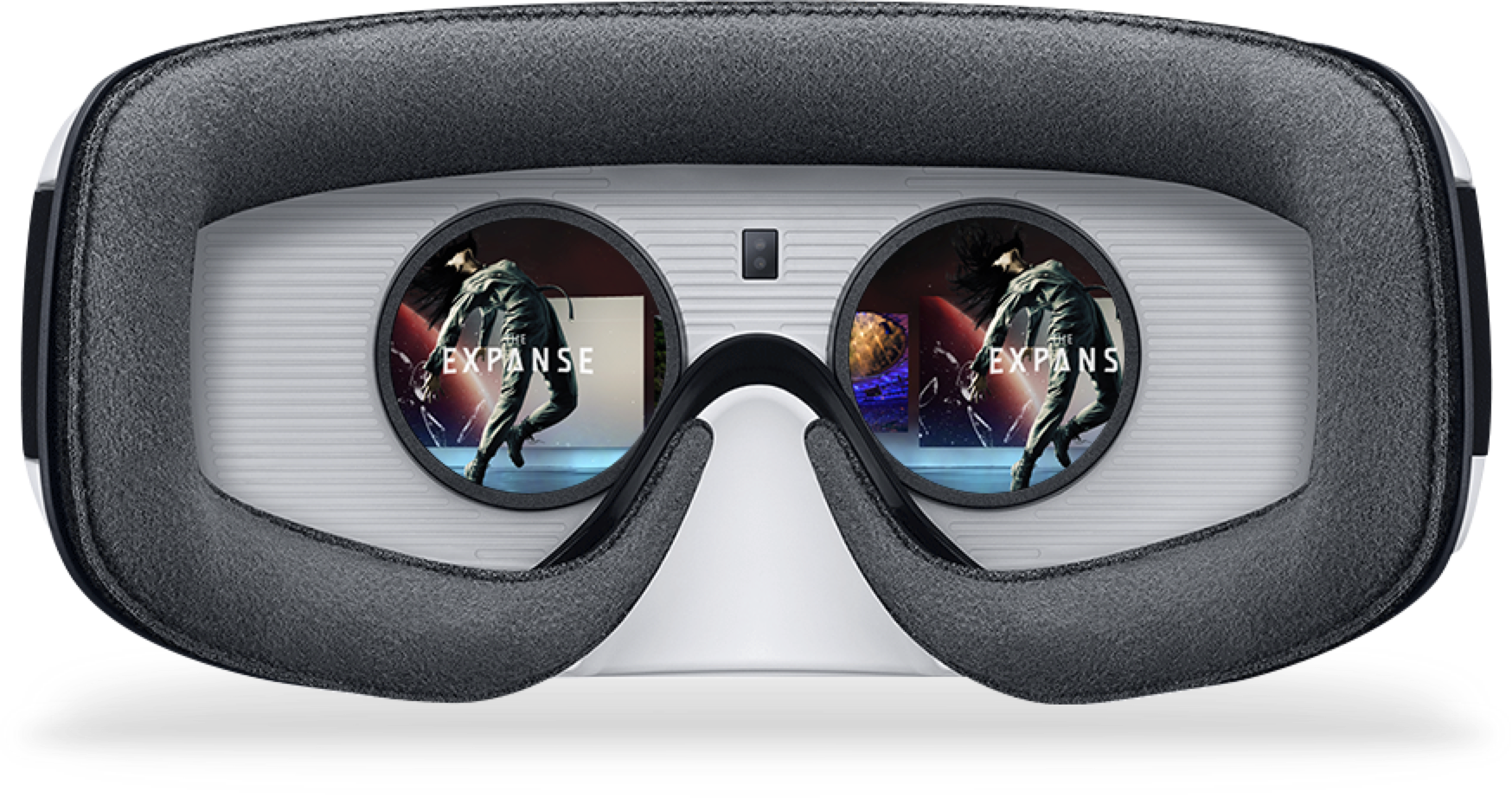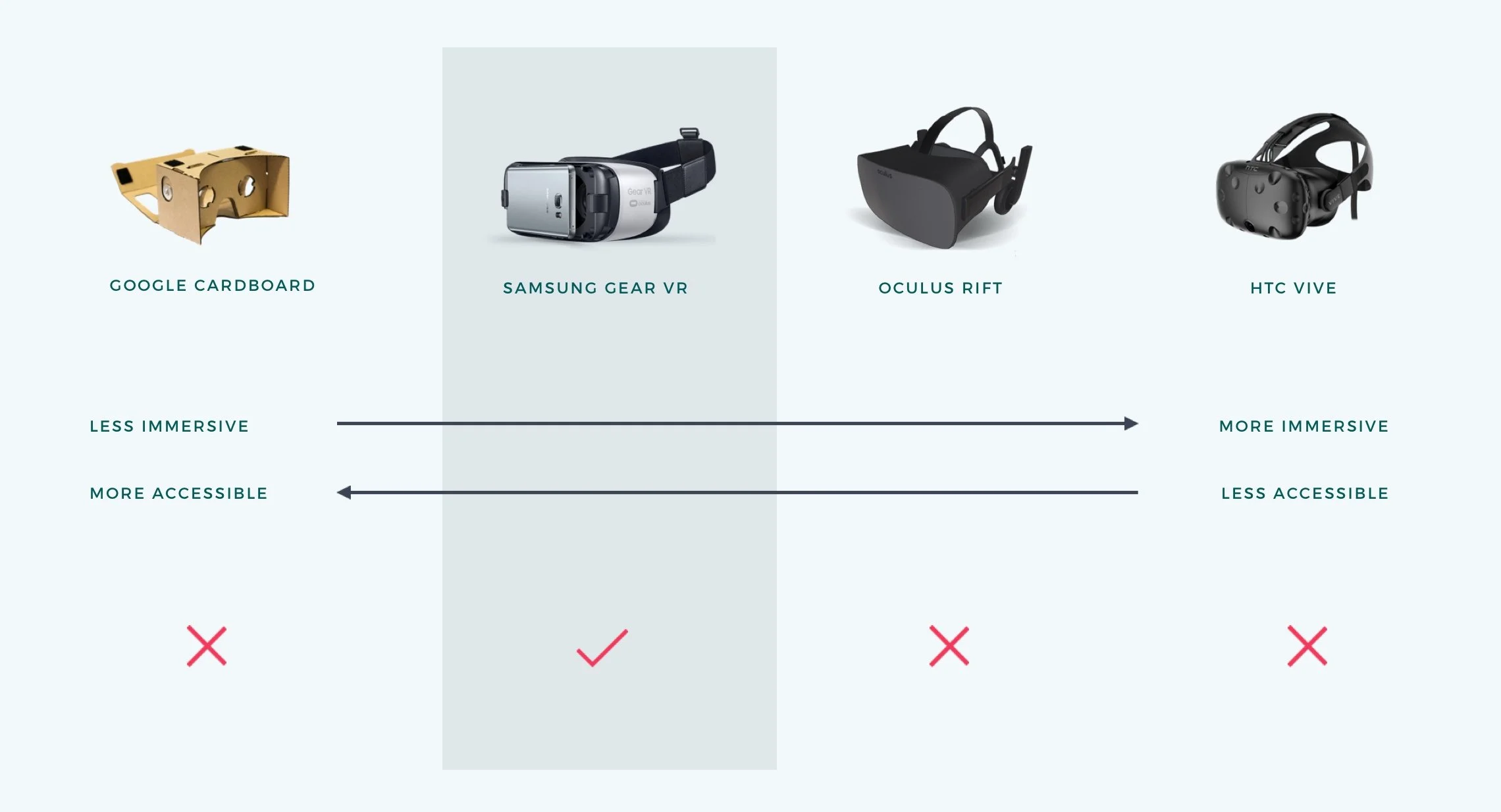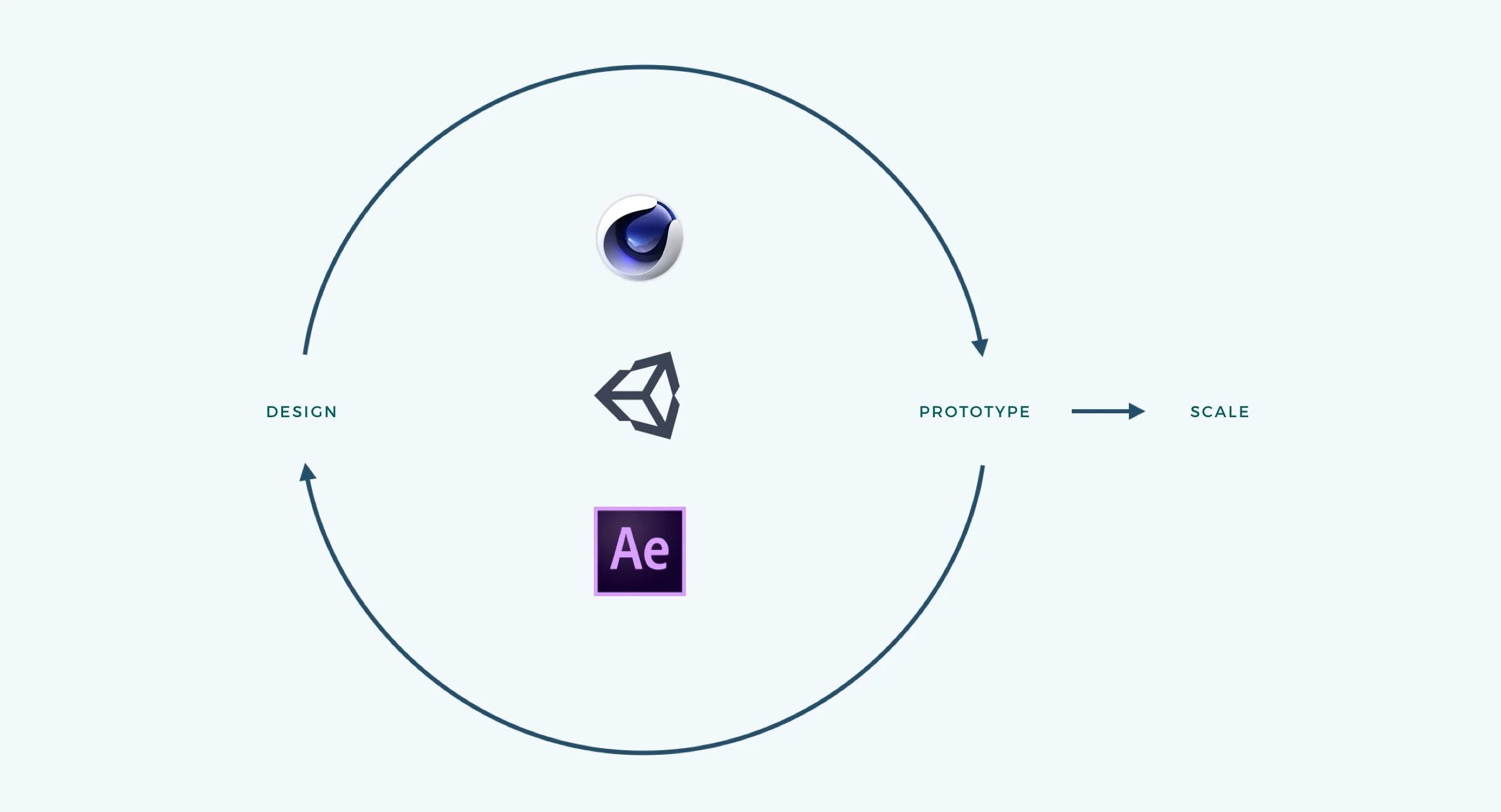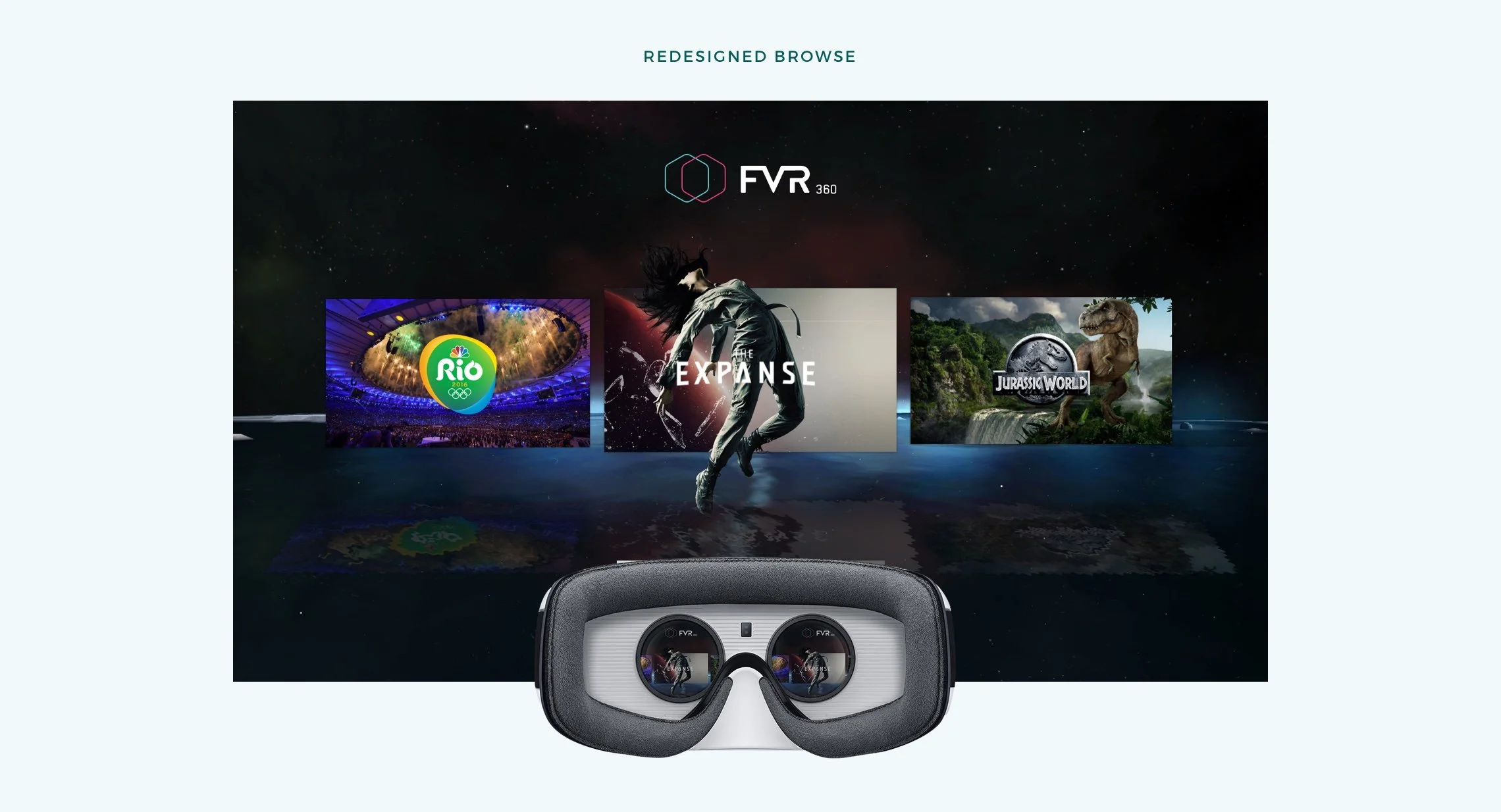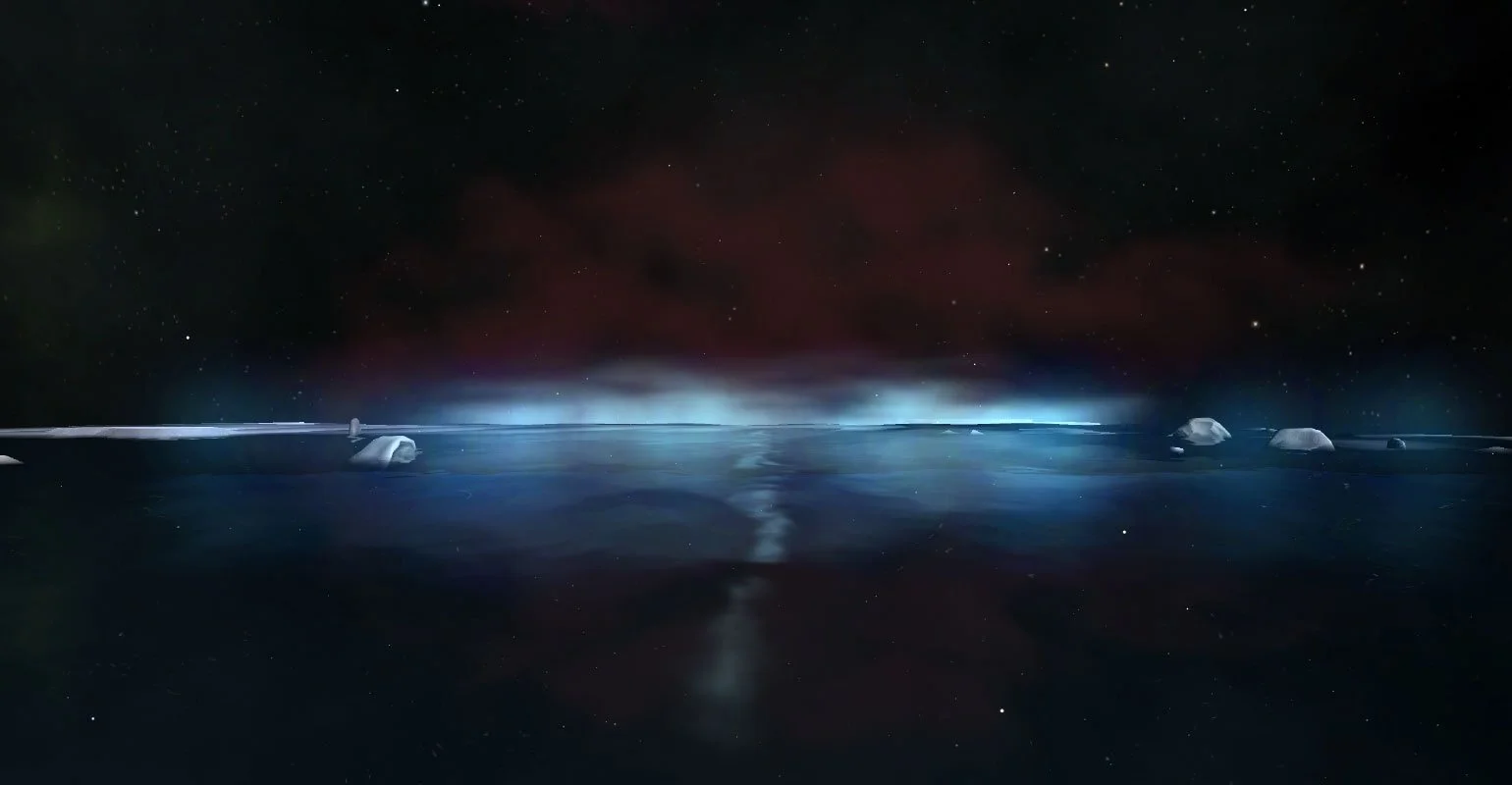
Frost VR
Moving entertainment into virtual reality
Part of my responsibilities within Comcast was to help understand emerging trends in technology, design, and consumer expectations and how that impacts our business and user experience. With the anticipated uptake of virtual reality within the next few years, I thought it was important to take a look at what that might mean for Comcast. Leveraging our proof of concept, we presented opportunities to get executive buy in to make the project a reality.
Understanding the Space
When chosing where to begin, typically we would look at best practices and get immersed with what experiences were out that were doing interesting things. At that point, since everything was very new, it came down to just trying things. Testing out ideas and not being afraid to fail was the only way to really make progress.
Choosing Where to Start
At the time the options were pretty limited. The super immersive experiences, like HTC Vive and Oculus, were still just dev kits and Google Daydream had yet to be announced. We decided to focus on the Samsung Gear because it was already out, the barrier to entry was rather low price point-wise, the quality was reasonable, and the portability of it made it fulfill use cases that applied to Comcast's video business.
Use Cases
To help drive the design exploration, we began to think through potential use cases around virtual reality when it comes to television consumption.
Virtual Living Room
With the adoption of mobile devices, consumers expect content to be portable where ever they go. VR can make that happen even further in putting a user in an immersive virtual environment instantly. Using VR, Comcast can simulate any size television that a consumer wants in a private space regardless of physical constraints such as in airplanes or small apartments.
Social
Much of TV is inherently a social activity. While going into VR isolates you from your physical environment, it connects the user with the world in a virtual environment. With VR, users could watch TV with their loved ones, friends, or those with shared interests in virtual spaces.
New Storytelling Medium
With experiments happening with 360 video, VR has the potential to be the new way that people experience narratives. Comcast could create a platform that supports traditional content and emerging storytelling formats that are familiar and build on the foundation that it already provides
Principles
Based on a few failed experiments, we developed a few principles and best practices that we would then use as we were applying to our designs moving forward.
Gaze Control
The Samsung Gear comes without a remote control, therefore eliminating much of the advanced functionality that you would see with other forms of virtual reality. Using gaze allows the user to manipulate and navigate the experience without having to find the touch pad on the side of the unit.
Design in a Radius
Our perception of the world is in a radius that extends out from where we stand. When designing frameless, the experience needs to take this into account.
Remove Seams
The interaction design needs to be as seamless as possible to maintain the virtual environment. Use the environment to maintain sense of place while content inside can be more dynamic.
Design Process
Our design process overlapped a lot with development and became super reliant on each other. The skill sets and tools have a steep learning curve and prototyping tools just don't exist like they do for other mediums. Design and development were primarily done in Unity 3D together. I was able to lay scenes out using the Oculus so that the placement and space made sense and use After Effects and Cinema for animation studies with a lot of back and forth until we felt like something was right.
Building Environments
When creating experiential spaces our first assumption was that we were going to have to be loading 3D objects into the space in order for it to feel right. When trying out a few approaches, we actually found that the 2D assets worked quite well as long as objects were placed in z-index properly so that a parallax effect was achieved. In most examples we were able to use assets that were already created for traditional experiences.
Keep actions, directions, interactions, and regions consistent across the experience. Designs should always keep what's important in a consistent region of the screen. In the primary UI that is the upper left and when sharing with video it is the lower third. This allows the user to always have a sense of place as they interact with the UI.
Content is the Hero
Keep content the hero of the experience. Design for design should be avoided. Always make the content as big and focused as possible
Sound Design
We made an assumption that if users were using VR to watch video, they most likely were going to wear headphones. Sound design was an extremely important aspect to the ambience and immersion of the UI. Leveraging my background as a musician, I put together an ambient track and some interactions to enhance the immersion.
Proof of Concept
Based on some of the tactical learning that we discovered about the medium, we created a proof of concept. We focused the prototype to take on our first use case of making a portable TV experience that extends our existing services into VR. We took this prototype to senior leadership and showed it to a few networks to generate excitement and gather feedback.
Partnership with Labs
Our proof of concept generated enough enthusiasm with our product and technology leadership to decide that we should push a public version with our Comcast Labs group. Comcast Labs is a technically focused team within Comcast that does a lot of R&D experiments. Already having a good relationship with them, we thought this was a great opportunity. While we could focus in on the user experience, they could take ownership of the technical hurdles of getting video working.
Switching Focus
With Comcast Labs we refocused on our third use case. Knowing that we were blocked with digital right management, 360 content had less rights issues so saw it as an opportunity to keep momentum. Being that this content is not as expansive as traditional TV, we aimed to craft an experience that was highly customized.
Design Sprint
Based on this high level idea, we did a one week design sprint to explore and illustrate what that concept might look like. The experience would focus on 360 video content and take advantage of having more customized specifications that we could work give the business team to work into content deals.
The VR build takes advantage of a lot of the lessons we learned along the way of the first version. This time, it was designing entirely in Unity, including layout and design. This really made the design intent stay 100% intact without any loss of fidelity or understanding. At this point, I had learned about particles, terrains, and other aspects of designing in Unity so the design was more purely designed in VR.
Extending the Value
During our exploration we also wanted to think about VR and its relationship to the entire ecosystem. As part of our entire story, we thought through use cases of how VR might play a role with the TV experience. How might a user move content between the two devices? Would this make VR less isolating?

